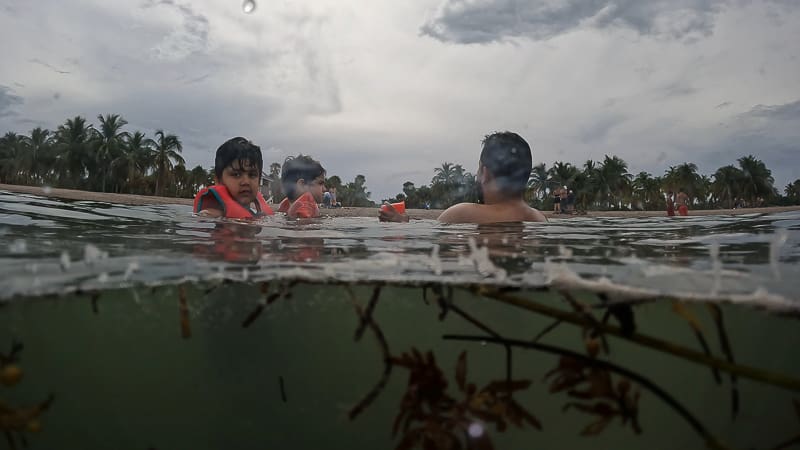Record water temperatures are starting to take a toll on Biscayne Bay and nearby waters as experts are starting to see coral bleaching and fear the conditions are ripe for another massive fish kill.
Miami-Dade Mayor Daniella Levine Cava on Wednesday held a Zoom roundtable with several scientific experts and county officials to get the latest status on the bay.
“I am the water warrior,” she said. “I have assumed the role of championing all of our water resources, chief among them our bay.”
The experts, including many serving on the Biscayne Bay Watershed Management Advisory Board, stressed to Levine Cava that it is more than water temperature that needs monitoring – it is residential septic tanks and water releases by the South Florida Water Management District. Both could flush agricultural and industrial pollution into the bay.
It all plays a part in critical oxygen and salinity levels.
“It’s a complicated system. These are worrying events. And unfortunately, we’re not really that good at predicting what’s going to happen because of its complexity,” said Joe Serafy, a research fishery biologist with NOAA.
“We aren’t seeing yet major fish kills. We are seeing a few fish that are coming up dead.”
Rachel Silverstein, the executive director for Miami Waterkeeper, said pollution leaves the bay fragile, increasing risk when high temperatures threaten to push it “over the brink.”
“If we had healthy seagrass beds, if we didn’t have all these water quality issues, we wouldn’t be so vulnerable to algae blooms and fish kills,” she said.
Scientists spotted coral bleaching at a reef in the Port of Miami July 11, as well as Emerald Reef off of Key Biscayne, said Chris Kelble, Director, Ocean Chemistry and Ecosystems Division.
“What we’re seeing this summer is the highest temperatures on record, that have been recorded for sea surface temperature and Biscayne Bay,” he said.
Invest in Local News for Your Town. Your Gift is tax-deductible
Stick a toe into the water and it feels like bathwater — or a hot tub. Ocean temperatures on the tip of Florida exceeded 100 degrees Fahrenheit two days in a row this month.
Pamela Sweeney, a senior scientist with the county’s Department of Environmental Resources Management, said the June water temperature in Biscayne Bay was about 89 degrees at eight testing sites. In July, water temperatures reached 93 degrees.
As temperatures increase, the amount of dissolved oxygen in water decreases, threatening aquatic life. Another fear is that a major rainfall event that would bring a flush of nutrient-loaded freshwater into the bay. That size of deluge could be a tipping point, triggering a fish kill like the one in October 2022.
While Key Biscayne has largely removed septic tanks as a source of pollution, Levine Cava was frustrated with septic tanks in neighborhoods along the Little River such as Biscayne Shores. She even suggested portable toilets and showers for homes on septic systems during large rain events.
“We have been relatively lucky that we haven’t had ground-saturating rainfall events, so that the oxygen levels are okay,” said Todd Crowl, director of the FIU Institute of Environment.
Another stroke of luck is that a 5,000-mile-long, 12-million-ton belt sargassum never made it to South Florida’s shores and ended up in the eastern Caribbean. Sargassum can choke coastlines, smother sea grasses and sea life..
Diego Lirman, a marine biology professor at the Rosenstiel School of Marine, Atmospheric, and Earth Sciences, said there hasn’t yet been a significant impact on marine life except for the corals as oxygen and salinity levels have held.
But the coral outlook is “bleak,” said Margaret Miller, the research director for the coral reef nonprofit Secore. She said the extreme water temperatures of recent weeks are so far removed from scientific experience, there is no way to know how long-lasting any damage may be, despite ongoing coral rescue efforts.
“We know that this historic extreme heat is devastating for the life of the bay,” Mayor Levine Cava said.
“It is unfortunately the new normal for us.”
JOHN PACENTI is the executive editor of the Key Biscayne Independent. John has worked for The Associated Press, the Palm Beach Post, Daily Business Review, and WPTV-TV.



